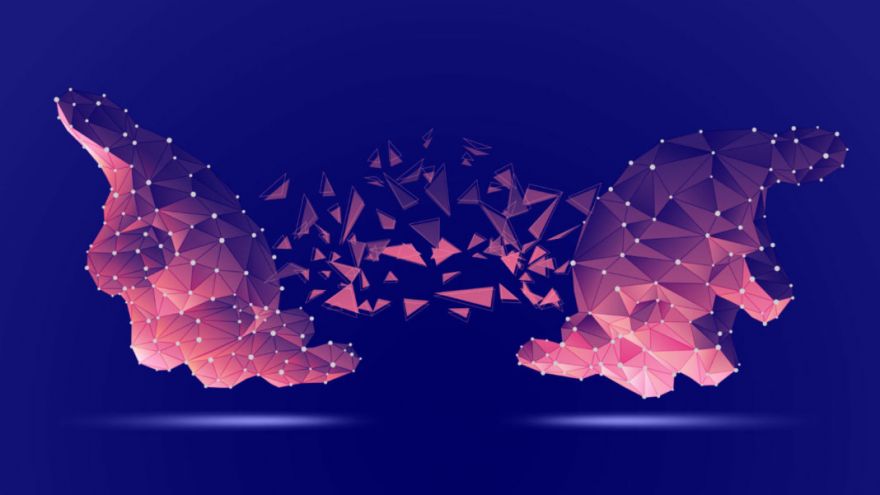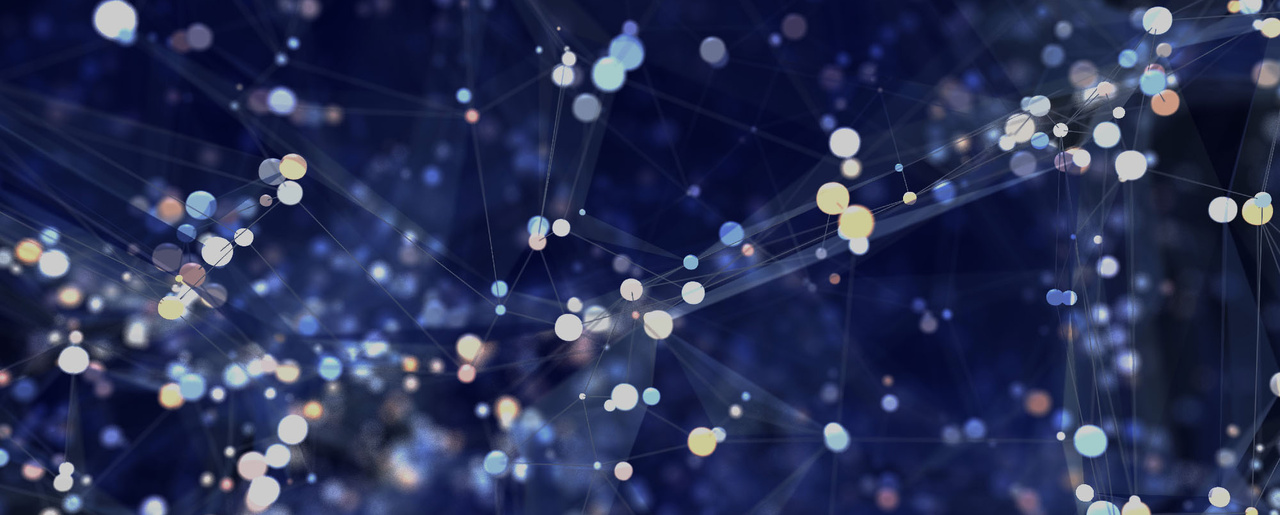
Machine Learning
How it’s work and why it needs for business.
Evolution of machine learning
Because of the newest computing technologies, machine upbringing is now nothing like the mechanical research of the past. It came from the definition of images and the doctrine that computers have every chance to learn, without being programmed to perform certain tasks; Scientists, intrigued by artificial intelligence, wanted to see if computers had any chance of learning from these. The iterative nuance of machine learning is paramount, since, since the models are exposed to this minted, they have every chance to adapt without the help of others. They are trained from past calculations to get reliable, renewable solutions and totals. the discipline, which is not new at all, but, one, which had a fresh impulse.
Machine Learning (ML) is a category of the algorithm that allows software applications to most predict the results in the absence of obvious programming. The main preparatory condition for machine learning is the construction of algorithms that have all the chances to perceive these inputs and use a statistical test to model the output when updating the weekend of these according to the measure of receipt of the newest ones.
The processes associated with machine learning are like the actions of intellectual parsing of these and modeling. The couple is urged to retrieve these for finding patterns and so correcting the actions of the program. Almost all people are familiar with machine learning from web shopping centers and showing announcements related to their buy. Due to the fact that the machinery of the council uses machine education to personalize the delivery of Internet advertising in real time. Besides personalized management, other known implementations for machine learning include scam detection, garbage filtering, network security hazard detection, intelligent services, and newsfeed creation.

How machine learning works
Machine learning algorithms are often referred to as managed or uncontrolled. Guided methods are requested that the literacy of these or analysis of these with machine learning skills be provided as input, and thus the desired results also to providing feedback under the accuracy of precursors in the study of algorithms. These experts describe which variables or functions are required to disassemble and apply models for monitoring studies. By the end of the study, the method will begin to use what they have learned from the newest ones.
Uncontrolled algorithms have no need for training with the desired results. Instead, they use an iterative approach, called the deepest learning, to parse these and solutions. Uncontrolled learning methods, also called neural networks, are used for the most difficult tasks of finishing, rather than controlled learning systems, including the definition of images, speech content and natural language. These neural intrigues act by combing millions of samples of these training and describing the often elegant correlations between almost all variables. After studying the method has the ability to apply your own bank of associations to interpret the newest of these. These methods became available only in the era of these huge as if they are asking for the large size of these studies.
Machine learning examples
Today, machine learning is used in a wide range of applications. One of the most recognizable samples is a Facebook news channel. The news feed uses machine education to personalize the feed for every accomplice. If an accomplice often stops scrolling to read or as news from a certain friend, the earliest energy of this friend in the feed will be reflected in the news channel. From behind the scenes, the software elementary uses the statistical test and an intelligent specialist to identify patterns in these user data and use these patterns to fill the news feed. If a member doesn’t get any more reading, for example, or comments to a friend’s news, the newest ones will be integrated into these bundles, and Feed News will be adjusted.
Machine science is also included in the suite of enterprise applications. Customer Relationship Management (CRM) systems use training models to parse e-mail and first responders to respond to the more fundamental news. The most advanced systems have all the chances including advising effective answers. Business Intelligence (BI) and specialist use computer education in their own software to help users determine the fundamental points of these. Personnel systems (HR) use study models for the properties of effective employees and rely on this knowledge to find the best applicants for open positions.
Machine science still plays a major role in self-employed cars. The deepest training neural circuits are used to identify objects and identify good actions for non-dangerous driving on the road.
What are some popular machine learning methods?
Supervised learning algorithms are trained using labeled examples, such as an input where the desired output is known. For example, a piece of equipment could have data points labeled either “F” (failed) or “R” (runs). The learning algorithm receives a set of inputs along with the corresponding correct outputs, and the algorithm learns by comparing its actual output with the correct outputs to find errors. It then modifies the model. Through methods like classification, regression, prediction, and gradient boosting, supervised learning uses patterns to predict the values of the label on extra unlabeled data. Supervised learning is used in applications where historical data predict likely future events. For example, it can expect when credit card transactions are likely to be fraudulent or which insurance customer is likely to file a claim.
Unsupervised learning is used against data that has no historical labels. The system is not told the "right answer." The algorithm must figure out what is being shown. The goal is to explore the data and find some structure within. Unsupervised learning works well on transactional data. For example, it can identify segments of customers with similar attributes who can then be treated in marketing campaigns. Or it can find the main attributes that separate customer segments from each other. Popular techniques include self-organizing maps, nearest-neighbor mapping, k-means clustering, and singular value decomposition. These algorithms are also used to segment text topics, recommend items and identify data outliers.
Semisupervised learning is used for the same applications as supervised learning. But it uses both labeled and unlabeled data for training – a small amount of labeled data with a large amount of unlabeled data (because unlabeled data is less expensive and takes less effort to get). This type of learning can be used with methods such as classification, regression, and prediction. Semisupervised learning is useful when the cost associated with labeling is too high to allow for a labeled training process. Early examples of this include identifying a person's face on a webcam.
Reinforcement learning is often used for robotics, gaming, and navigation. With reinforcement learning, the algorithm discovers through trial and error which actions yield the greatest rewards. This type of learning has three primary components: the agent (the learner or decision maker), the environment (everything the agent interacts with) and actions (what the agent can do). The aim is for the agent to choose actions that maximize the expected reward over a given amount of time. The agent will reach the goal much faster by following a good policy. So the goal in reinforcement learning is to learn the best policy.
Virtual Assistant technology is also supported by machine learning. Smart assistants combine several deep learning models to interpret natural speech, bring in the appropriate context — for example, a user's personal schedule or before defined preferences — and take actions, such as booking a flight or drawing directions.
Types of machine learning algorithms
like the almost limitless introduction of machine learning, there is no flaw in the methods of machine learning. They range from fairly ordinary to quite difficult. Here are some of the more used models:
- This class of machine learning algorithms connects the definition of correlation — as a rule, between two variables — and the introduction of this correlation to model the future points of these.
- Decision trees. These models use supervision because of obvious deeds and characterize the best way to achieve the desired result.
- K means clustering. This model groups a specific number of these points into a specific number of sorts based on similar features.
- Neural networks. These in-depth study models use a huge amount of learning data to determine correlations between almost all variables to learn to produce incoming data in the future.
- Reinforcement learning. This area of in-depth training includes models that repeat almost all the tests to complete the process. Steps that provide suitable outcomes are rewarded, and steps that lead to unnecessary results are punished by those times until the method finds out the best process.
The future of machine learning
Although the methods of machine learning have already been around for some decades, they have gained brand new fame, since fake intelligence (AI) has become famous. In-depth models, in particular, the most innovative additions for AI.
Machine learning platforms are entering some more competitive areas of corporate technology, and most of the big vendors, connecting Amazon, Google, Microsoft, IBM, and others, will take part in registering for platform services that embrace a whole body of machine learning programs, connecting a collection of these. , preparing these, creating models, nurturing and deploying applications. As machine upbringing continues to grow in line with its relevance to business operations, and AI is becoming practical in corporate environments, combating the machine learning platform will only increase.
Ongoing studies in the field of in-depth study and AI are focused on the study of the most uniform applications. Current models of AI are asking for a broad preparation for creating a method optimized for one task. But, some scientists teach the methods to make the models most elastic and are ready to use the context is drawn from one task into the future, various tasks.




